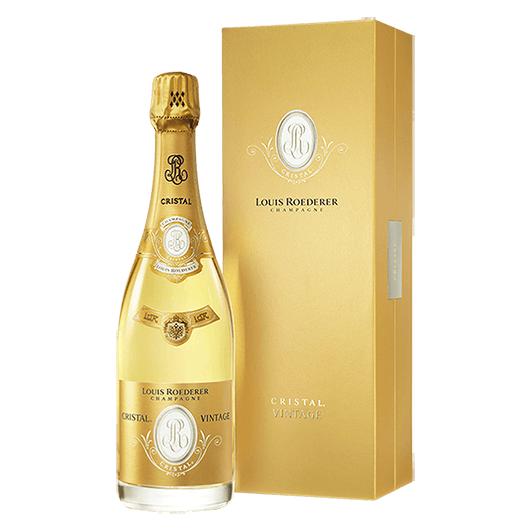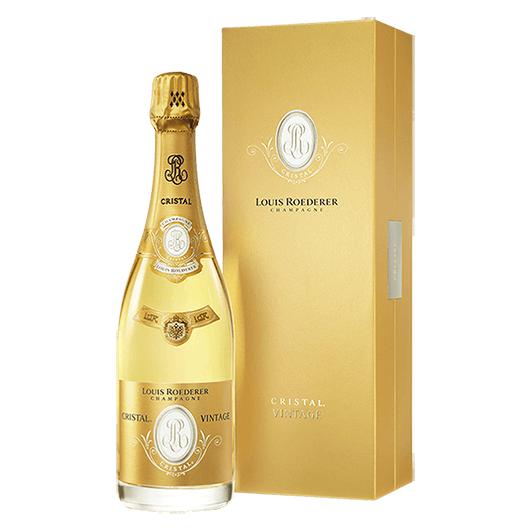1
/
of
1
Roederer Cristal - 2014 (750ml)
Roederer Cristal - 2014 (750ml)
Regular price
$399.99
Sale price
$399.99
Regular price
$499.99
Unit price
/
per
This vivid Champagne shows up-front and linear definition, thanks to rapierlike acidity, with finely meshed flavors of ripe black cherry and mandarin orange fruit, raw almond, anise and cardamom spice as well as a touch of honeycomb, which all unfurl and expand on the fine, creamy palate. Sleek acidity continues through to the finish, with additional racy character provided by a streak of minerally saline and chalk, which gains momentum through the midpalate and rings out on the well-cut, lasting finish. Pinot Noir and Chardonnay. Drink now through 2040.
Wine Spectator - 98 points
Wine Spectator - 98 points
Share :

- varietal
- Region
- Type
- Reviews
Product Review
Still young, with toast aromas and shining white-fruit flavors, the latest release of Cristal is just setting out. A dry, tight core of intense flavors are shot through with minerality from the pure chalk soil of the 45 individual parcels in the blend. Drink this wine from 2025. Organic.
#1 Top 100 Cellar Selections 2022
Product Score
97
Champagne is more often than not a composition of three main grapes; Chardonnay, Pinot Noir and Pinot Meunier. In Champagne, France, they are usually sourced from different villages and vintages to give winemakers some insurance in what is a relatively marginal climate but which also to add complexity into the wines. Chardonnay typically contributes stone fruit (white peach), apples and citrus fruit to the blend while Pinot Noir and Meunier can add body and more red fruit such as redcurrants and sour cherries.
Champagne was the first region in the world to start producing sparkling wine on a commercial level and where most New World producers look to for inspiration. Producing a fizzy wine often occurred by accident, and was, for a long time seen as a detriment with producers going to great lengths to prevent a second fermentation. Due to the marginal climate the temperature in the fall would often dip, sedating the yeasts before all the sugars were converted into alcohol. When the region warmed up the following spring the unfermented sugars occasionally spurred on a second fermentation trapping the carbon dioxide (a by-product) in the bottle . It wasn’t until the turn of the 19th century that sparkling wine became popular and desirable. The region is split into four regions. Three are adjoining: The Montagne de Rheims to the north, the Cotes de Blanc to the south, and the Marne Valley in between. The fourth and separate region is the Cote des Bar in the Aube valley, some 70 miles south of Epernay.
Sparkling wine is a wine with high levels of carbon dioxide in it making it bubble. The carbon dioxide is a result of natural fermentation, either in a bottle or a specially designed tank, or as a result of carbon dioxide injection.
Sparkling wine is usually white or rosé but there are many examples of red sparkling wines. The sweetness of sparkling wine can range from very dry "brut" styles to sweeter "doux" varieties.
When one thinks of sparkling wine they usually think of Champagne, but this wine is exclusively produced in the Champagne region of France and many sparkling wines are produced in other countries and regions. Most countries reserve the word Champagne for a specific type from the Champagne region of France. The French terms "Mousseux" or "Crémant" are used to refer to sparkling wine not made in the Champagne region. German and Austrian sparkling wines are called Sekt. The United States is a significant producer of sparkling wine with producers in numerous states. Recently the United Kingdom, which produced some of the earliest examples of sparkling wine, has started producing sparkling wines again.


